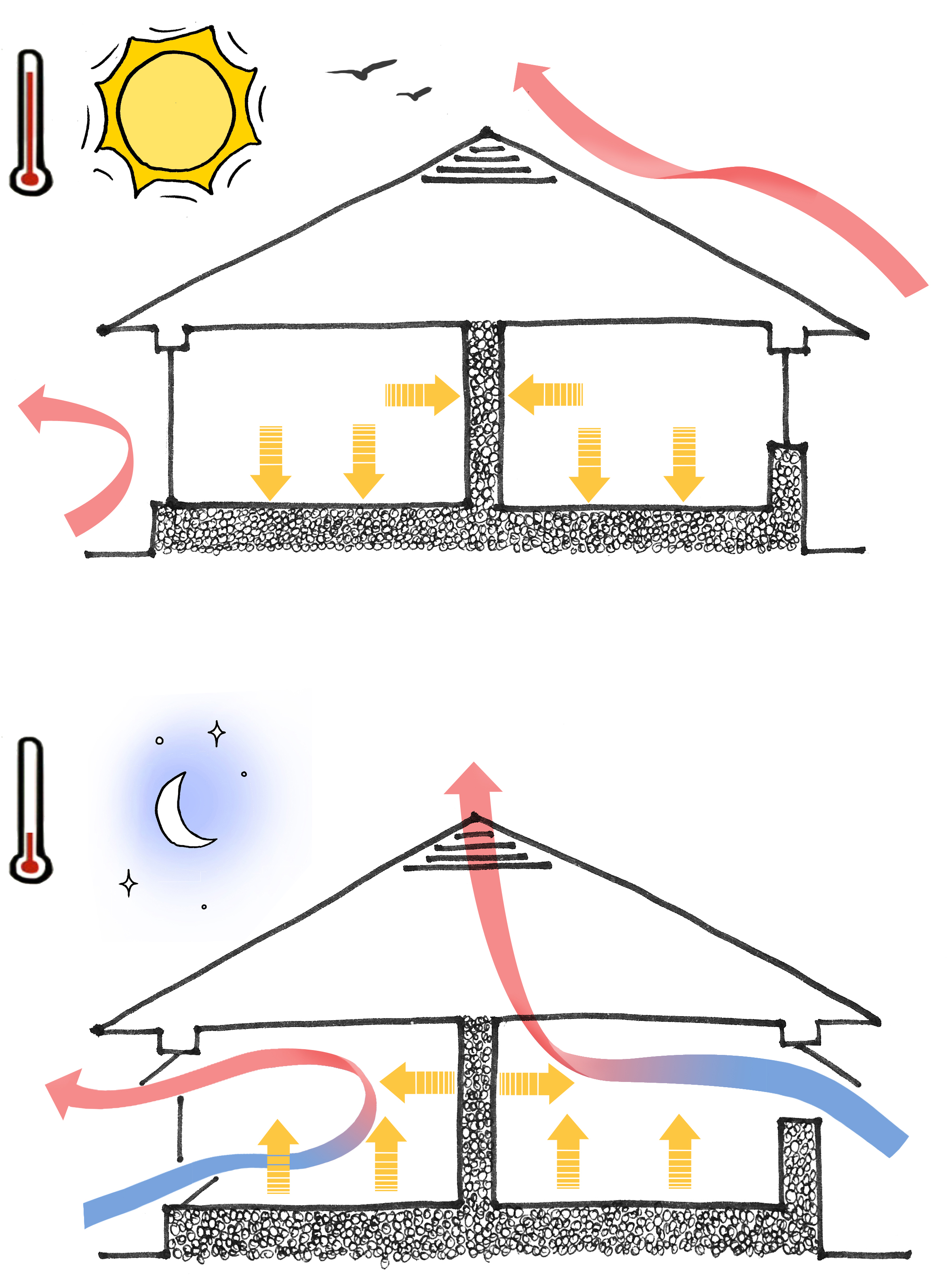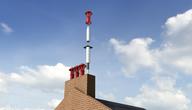You are here
Night-Purge Ventilation (or "night flushing") keeps windows and other passive ventilation openings closed during the day, but open at night to flush warm air out of the building and cool thermal mass for the next day.
Night-purge ventilation is useful when daytime air temperatures are so high that bringing unconditioned air into the building would not cool people down, but where nighttime air is cool or cold. This strategy can provide passive ventilation in weather that might normally be considered too hot for it.
Successful night-purge ventilation is determined by how much heat energy is removed from a building by bringing in nighttime air, without using active HVAC cooling and ventilation.
During the day, thermal mass soaks up heat; at night it is cooled by outside air
Night flushing works by opening up pathways for wind ventilation and stack ventilation throughout the night, to cool down the thermal mass in a building by convection. Early in the morning, the building is closed and kept sealed throughout the day to prevent warm outside air from entering. During the day, the cool mass absorbs heat from occupants and other internal loads. This is done largely by radiation, but convection and conduction also play roles.
Because the "coolth" of night-purge ventilation is stored in thermal mass, it requires a building with large areas of exposed internal thermal mass. This means not obscuring floors with carpets and coverings, walls with cupboards and panels, or ceilings with acoustic tiles and drop-panels. Using natural ventilation for the cooling also requires a relatively unobstructed interior to promote air flow.
Limitations
These systems have some limitations due to climate, security concerns, and usability factors.
Climatically, night flushing is only suitable for climates with a relatively large temperature range from day to night, where nighttime temperatures are below 20 or 22°C (68 or 71°F). If the building is occupied at night, like residences, the ventilation should not be so cold as to be uncomfortable for occupants. In addition, the location should be one with adequate wind at night to provide the cooling.
Usability can be a concern, as the opening and closing of all the openings every day can be tiresome for occupants or maintenance staff, and they may not always open and close everything at the optimal times. This can be solved with mechanized windows or ventilation louvers, controlled by either a timer or a thermostat-driven control system.
Another usability issue is the possibility of rain coming in at night, damaging property or interior finishes. While rain is not a common occurrence in climates where night flushing works best, it can be addressed with overhangs, ventilation louvers with steep angles, and other structural measures.
Security can be a concern, especially in buildings that are unoccupied at night. This can be overcome with adequate security structures, such as bars or screens, or more sophisticated electronic systems.
Additional Resources:
- Night Flushing and Thermal Mass: Maximizing Natural Ventilation For Energy Conservation Through Architectural Features. By Kenneth A. Griffin. USC School of Architecture, Masters of Building Science Thesis Project.


